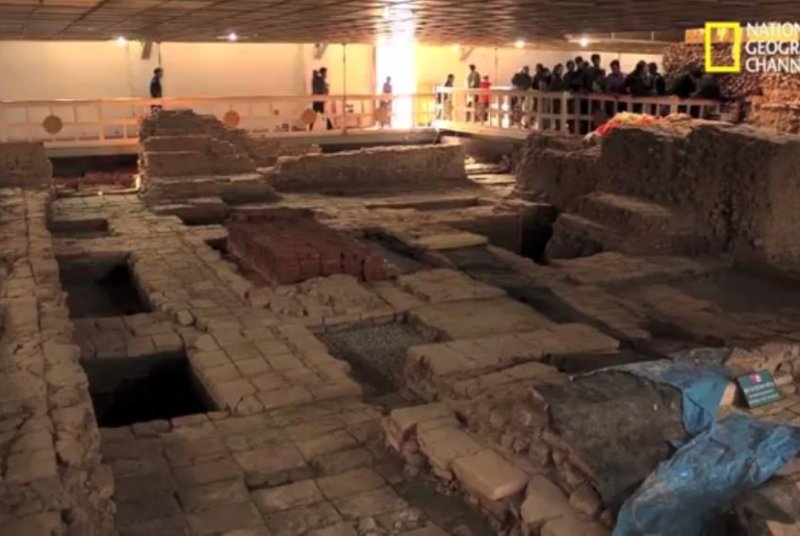Archaeologists have uncovered a Buddhist structure below the main shrine of the Maya Devi Temple in Lumbini, Nepal. Using radiocarbon dating, the archaeologists now feel that the Buddha was born in the 6th century BCE. (Screenshot via Durham University)
Nov. 25 (UPI) -- Archaeologists have uncovered a Buddhist structure below the main shrine of the Maya Devi Temple in Lumbini, Nepal.
The discovery at the legendary site now puts the birth of Buddha at 550 BCE, nearly a hundred years earlier than previously agreed by scholars.
The international team of archaeologists excavated postholes showing a wooden railing, and found an older wooden structure below the more recent brick structure of the Buddhist temple.
"What we have got is the earliest Buddhist shrine in the world," said lead author and archaeologist Robin Coningham of Durham University. "The big debate has been about when the Buddha lived and now we have a shrine structure pointing to the sixth century B.C."
The center of the shrine is roofless and is surrounded by smooth clay floors worn out possibly by visitors. Tree shrines like this one are also found in earlier Indian traditions, but the lack of sacrifices or offerings points to this being a Buddhist shrine.
The exact date of the Buddha's birth has been disputed, with Nepalese authorities suggesting it was 623 BCE and other traditions favoring a more recent date of 400 BCE.
But researchers like Julie Shaw, a lecturer in South Asian archaeology at University College London, is cautious about this new discovery.
"The worship of trees, often at simple altars, was a ubiquitous feature of ancient Indian religions, and given the degree of overlap between Buddhist ritual and pre-existing traditions, it is also possible that what is being described represents an older tree shrine quite disconnected from the worship of the historical Buddha," Shaw said.
[National Geographic]















